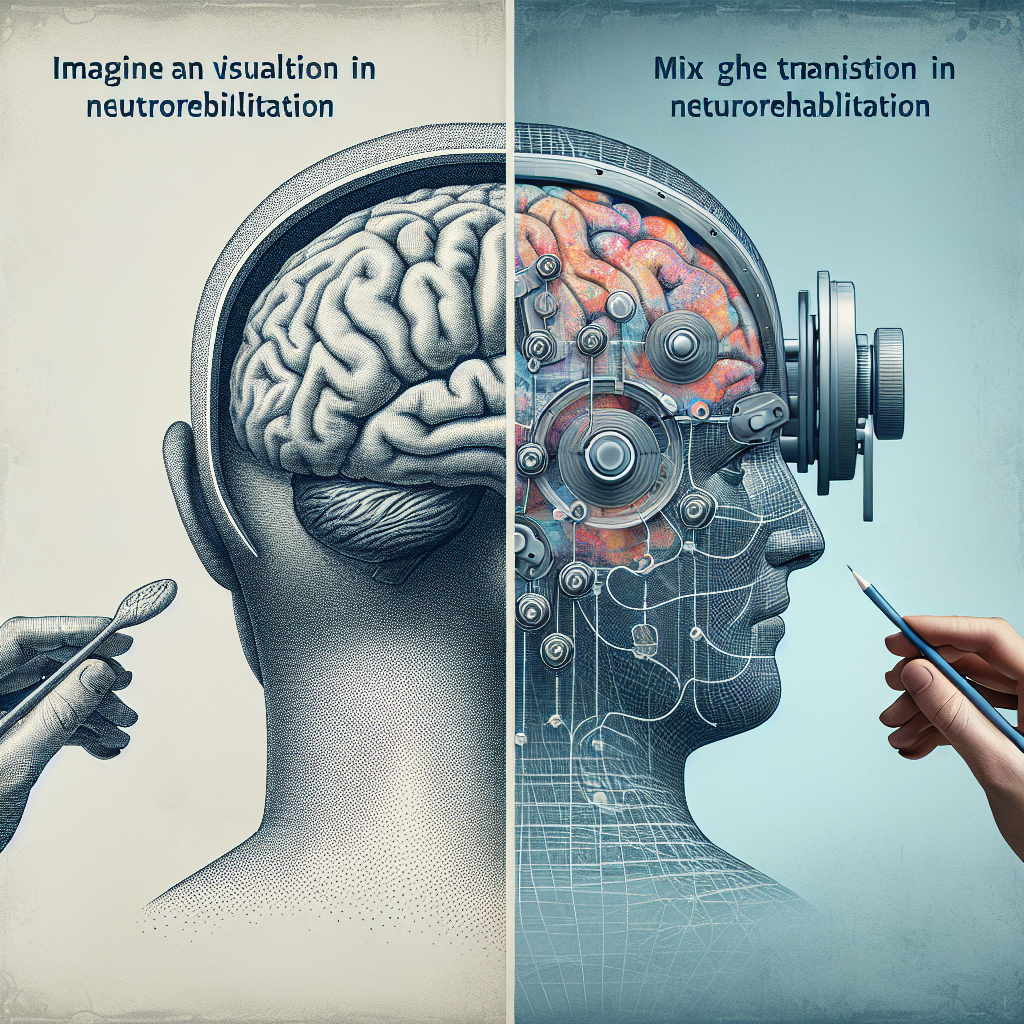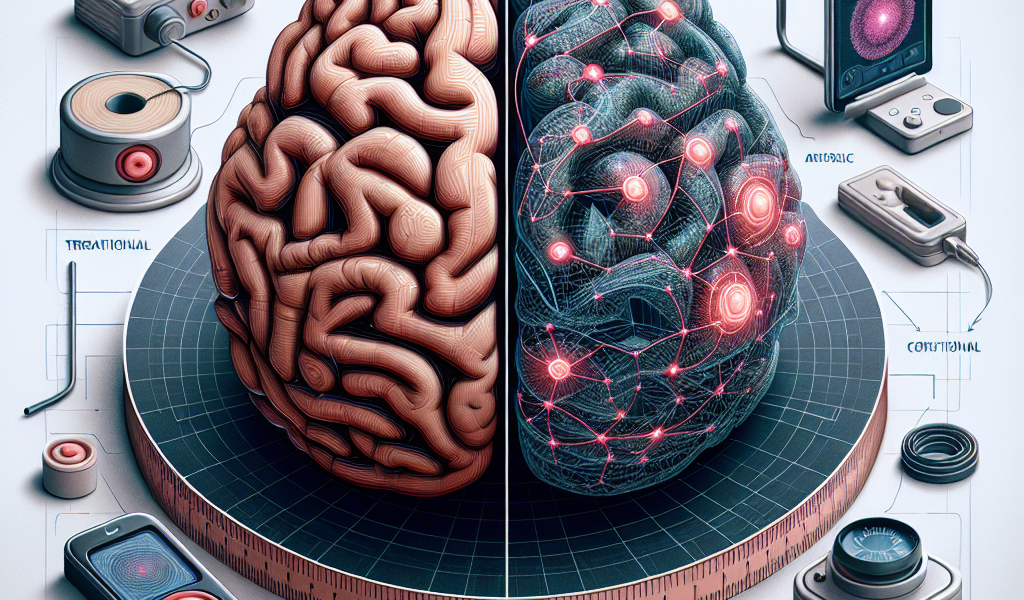What Are The Differences Between Traditional And Technology-based Neurorehabilitation Techniques?
You’re about to embark on a journey to understand the key differences between traditional and technology-based neurorehabilitation techniques. In navigating the complex landscape of neurorehabilitation, both traditional methods and modern technology-driven approaches offer unique benefits and limitations. This article highlights these nuances, providing you with a comprehensive understanding that can aid in making informed decisions, be it as a patient, medical practitioner, or just an intrigued reader. Delve into the captivating world of neurorehabilitation and uncover how these two approaches differ in methodology, effectiveness, and application.

Defining Traditional Neurorehabilitation
Overview of Traditional Neurorehabilitation
Traditional neurorehabilitation is a therapeutic strategy that employs a range of techniques to help aid recovery and improve the overall quality of life for those suffering from neurologic disorders. The essence of this approach lies in helping patients regain lost functions by retraining their brains or rerouting the way tasks are processed.
Methods Used in Traditional Neurorehabilitation
Traditional neurorehabilitation uses a breadth of approaches, typically personalized to the individual’s specific needs and often involving a multidisciplinary team. Traditional rehabilitation methods might encompass anything from physical training and occupational therapy to cognitive activities like puzzles and memory games. Repetitive and intensity-adjusted exercises are cornerstones of this technique.
The Role of Therapists in Traditional Neurorehabilitation
Therapists shoulder significant responsibility in traditional neurorehabilitation, guiding patients through every step of their recovery journey. They personalize the treatment plans, administer appropriate therapies, monitor progress, and motivate patients towards their rehabilitation goals.
Understanding Technology-based Neurorehabilitation
Overview of Technology-Based Neurorehabilitation
Technology-based Neurorehabilitation signifies the use of advanced technology devices in assisting or enabling neurorehabilitation. This type of rehab offers a combination of traditional methods and innovative technology to ensure a well-rounded, engaging, and effective approach to rehabilitation.
Technologies Used in Neurorehabilitation
There’s a wide array of technologies applied in neurorehabilitation, ranging from interactive virtual reality systems, robotics, wearable sensors, to biofeedback devices. These technologies offer engaging and interactive activities, personalized treatment profiles, and real-time data on patient performance.
The Role of Therapists in Technology-Based Neurorehabilitation
In technology-based neurorehabilitation, therapists continue to play a vital role, although it slightly pivots. They plan and oversee the therapeutic activities, analyze the collected data to adjust the therapy, and support patients in skill acquisition and motivation. Yet, much of the repetitive work may be assumed by tech devices, allowing therapists to focus on tasks that require human touch and expertise.
Principles of Traditional Neurorehabilitation
Repetition of Movement or Skills
Repetition is a fundamental principle in traditional neurorehabilitation. Since the brain learns through repetition, continually practicing certain movements or skills can help rewire the brain and expedite recovery.
Activities Based on Real-Life Situations
Traditional therapy often involves tasks that mimic everyday activities to improve the patient’s ability to perform daily functions independently. This may include activities like cooking, self-care tasks, or navigating through a room.
Emphasizing Patient’s Active Involvement
Traditional neurorehabilitation highly values patient’s active participation. It isn’t about therapists doing things for patients, but rather guiding and encouraging them to put efforts into their therapy, which aids in their long-term recovery.

Principles of Technology-based Neurorehabilitation
Interactive and Engaging Exercises
Technology enables the creation of stimulating and interactive exercises, making therapies more engaging. It adds a ‘game’ element making rehabilitation sessions more fun and motivating.
Adaptability of Programs
Technology-based methods allow individualized therapy settings, adjusting to the patient’s unique needs and progress. This targeted approach makes rehabilitation more efficient.
Use of Objective Measures for Tracking Progress
Technology-powered neurorehabilitation famously uses data-driven methods to monitor patient progress, providing therapists and patients alike with concrete measures of improvement, which can motivate patients and guide therapy adjustments.
Effectivity of Traditional Neurorehabilitation
Success Rates of Traditional Methods
Traditional neurorehabilitation has proved effective with notable success stories, albeit the recovery rates and pace differ from individual to individual. Its effectiveness primarily lies in its comprehensive approach and focus on real-life tasks.
Limitations of Traditional Neurorehabilitation
One of the key limitations of traditional neurorehabilitation is that it’s often labor-intensive and time-consuming. Furthermore, it may be tough to maintain motivation due to the repetitive and monotonous nature of the exercises.
Examples of Successful Recovery Using Traditional Methods
There are myriad stories of patients who have made remarkable recoveries using traditional methods, gaining back their mobility, cognitive abilities, independence, and improving their quality of life significantly.
Effectivity of Technology-based Neurorehabilitation
Success Rates of Technology-Driven Methods
Technology-driven rehabilitation has shown promising results in terms of patient outcomes, adherence to therapy, and accelerated recovery. Still, it’s essential to remember that technology complements rather than replaces traditional methods.
Limitations of Technology-based Neurorehabilitation
Though beneficial, technology-based rehabilitation has its limitations too. High costs, lack of personal touch, and the requirement for essential technical support could pose challenges.
Examples of Successful Recovery Using Technology-Based Methods
Similarly, there are several success stories tied to technology-based rehabilitation where patients were able to overcome their disabilities and regain their functional capabilities faster.
Comparing the Costs: Traditional vs Technology-based Neurorehabilitation
Financial Aspects of Traditional Neurorehabilitation
Traditional methods often require ongoing expenses for therapy sessions over an extended period which could be burdensome for some, even though they may not entail significant upfront costs.
Costs Associated with Technology-Based Neurorehabilitation
In contrast, technology-based rehabilitation often involves higher initial investments for equipment or software. However, the possibility of shorter recovery times and decreasing costs of technology can make this an economically viable option over time.
Economic Benefits of Technology-Based Over Traditional Methods
In the long run, technology-based rehabilitation may present significant economic benefits. It enables more efficient utilization of resources, reduces the pressure on health facilities, and could help patients return to work more quickly.
Accessibility and Convenience: Traditional vs Technology-based Neurorehabilitation
Accessibility of Traditional Neurorehabilitation Services
Traditional neurorehabilitation services are often accessible in various health facilities, although they depend significantly on the availability of trained personnel and could require substantial commuting for patients.
Convenience of Traditional Methods
Traditional methods require you to work and schedule with therapists regularly, which could present challenges in terms of time, travel, and commitment.
Accessibility and Convenience of Technology-Based Methods
Technology-based neurorehabilitation, on the other hand, can be implemented at home with telehealth options. It holds the potential to be more accessible and convenient, although it relies on having the necessary technology and reliable internet access.
Future Trends in Traditional Neurorehabilitation
Adapting to the Demands of Modern Healthcare
Traditional neurorehabilitation is evolving to meet the demands of modern healthcare. An increased emphasis on home-based rehab, tele-rehab, and closer integration with technology are some trends to watch.
Inclusion of New Methods or Techniques
There’s always scope for further expansion and refinement, incorporating new methods and techniques that are evidence-based and serve the needs of the patients.
Increased Collaboration with Technology-Based Methods
Future trends point towards an increased merger between traditional and technology-based methods, ensuring patients can benefit from the best mix of both worlds.
Future Trends in Technology-based Neurorehabilitation
Innovation in Neurorehabilitation Technologies
Advancements such as VR, AR, AI, Machine Learning, tele-rehabilitation, and wearable technologies promise to revolutionize technology-based neurorehabilitation, enhancing its effectiveness and accessibility.
Integration of Artificial Intelligence and Machine Learning
The integration of AI and Machine Learning holds huge promise for personalized rehabilitation programs, prediction models, and outcome analytics, enabling even more refined rehabilitation strategies.
Potential for Home-Based Technology-Driven Neurorehabilitation
Technology-based neurorehabilitation, particularly tele-rehabilitation and home-based therapies, look set to become more widespread. These therapies, enabled by digital advancements, could bring rehab exercises into the home, making them more accessible and less strenuous.
Each of these neurorehabilitation techniques, whether traditional or technology-based, holds its unique strengths and potential challenges. A combination of both, where feasible, is often the optimal approach in treating neurological disorders. Their shared goal is to optimize patients’ recovery, helping them regain their abilities and achieve the highest possible quality of life.

